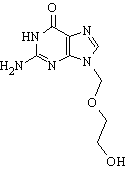After many years at sea as a cruise ship doctor, I am often asked: "How do you keep up to date?" Practising medicine in isolation from other doctors, we may be regarded by our peers as out of touch.
Not at all. We see a frequently changing population of well over 1000 passengers, mainly elderly and most taking at least one prescription medication. So we are in a unique position to observe the medicine currently practised ashore, and this gives us a good insight into "progress" Our therapeutic armamentarium is limited to the more tried and tested generic drugs of proven efficacy.
I doubt that any two people on board are raking exactly the same medication, although I am sure that many medical conditions are similar. It is not uncommon to find patients, especially from the United States, taking a dozen or more different drugs prescribed by different specialists, often without reference to what others have already prescribed, Despite this the patients thrive.
Generic prescribing is sadly becoming increasingly rare and I am sure that, for instance, a lot of normotension is expensively treated with state of the art branded products as a result of peer or patient pressure. Zithromax "Z-Pak" (azithromycin) has replaced Biaxin (clarithromycin), and before that Cipro (ciprofloxacin) as the fashionable antibiotic that American travellers carry to sell-medicate for various conditions. And still we see just about every antiemetic apart from our preferred drug of choice (promethazine) prescribed to prevent motion sickness. When scopolamine patches were popular (indeed, for a time, de rigueur) we treated far more passengers for the many and varied side effects of this drug--which is ineffective for seasickness anyway--than we ever saw suffering from motion sickness, which is rare nowadays given the size and stability of modern passenger ships.
What progress have I observed? In nearly a quarter of a century at sea there are only tour great therapeutic advances that spring to my mind. Firstly, the advent of cimetidine has greatly reduced the frequency of gastrointestinal haemorrhage, that worst of maritime medical disasters on account of the difficulties involved in blood transfusion at sea. Then, aciclovir, in its various forms, makes treatment of genital herpes, chickenpox, and shingles possible. Streptokinase is of proven value and in our unique situation we are able to administer it within minutes. Lastly, and in my view most importantly, is the use of intramuscular non-steroidal anti-inflammatory drugs to rapidly alleviate the fever and associated symptoms of acute viral illnesses.
With the global increase of seasonal pyrexial flu-like viral illnesses and viral gastroenteritis, we occasionally have outbreaks on board and we see a lot of acutely ill, febrile, elderly people. I learned of the use of non-steroidals anecdotally from a colleague several years ago and I never cease to wonder at their efficacy. As far as I am aware this usage is not documented and no thats have been performed. I am convinced that a lot of seasonal suffering and morbidity could be alleviated if this treatment were trialled and promulgated. When I describe this apparently miraculous treatment to colleagues ashore they look at me as if I have come from the moon, not the ocean deep. Progress?
Andrew Iddles senior ship's doctor
We welcome articles of up to 600 words on topics such as A memorable patient, A paper that changed my practice, My most unfortunate mistake, or any other piece conveying instruction, pathos, or human If possible the article should be supplied on a disk. Permission is needed front the patient or a relative it' an identifiable patient is referred to.
COPYRIGHT 2001 British Medical Association
COPYRIGHT 2001 Gale Group



